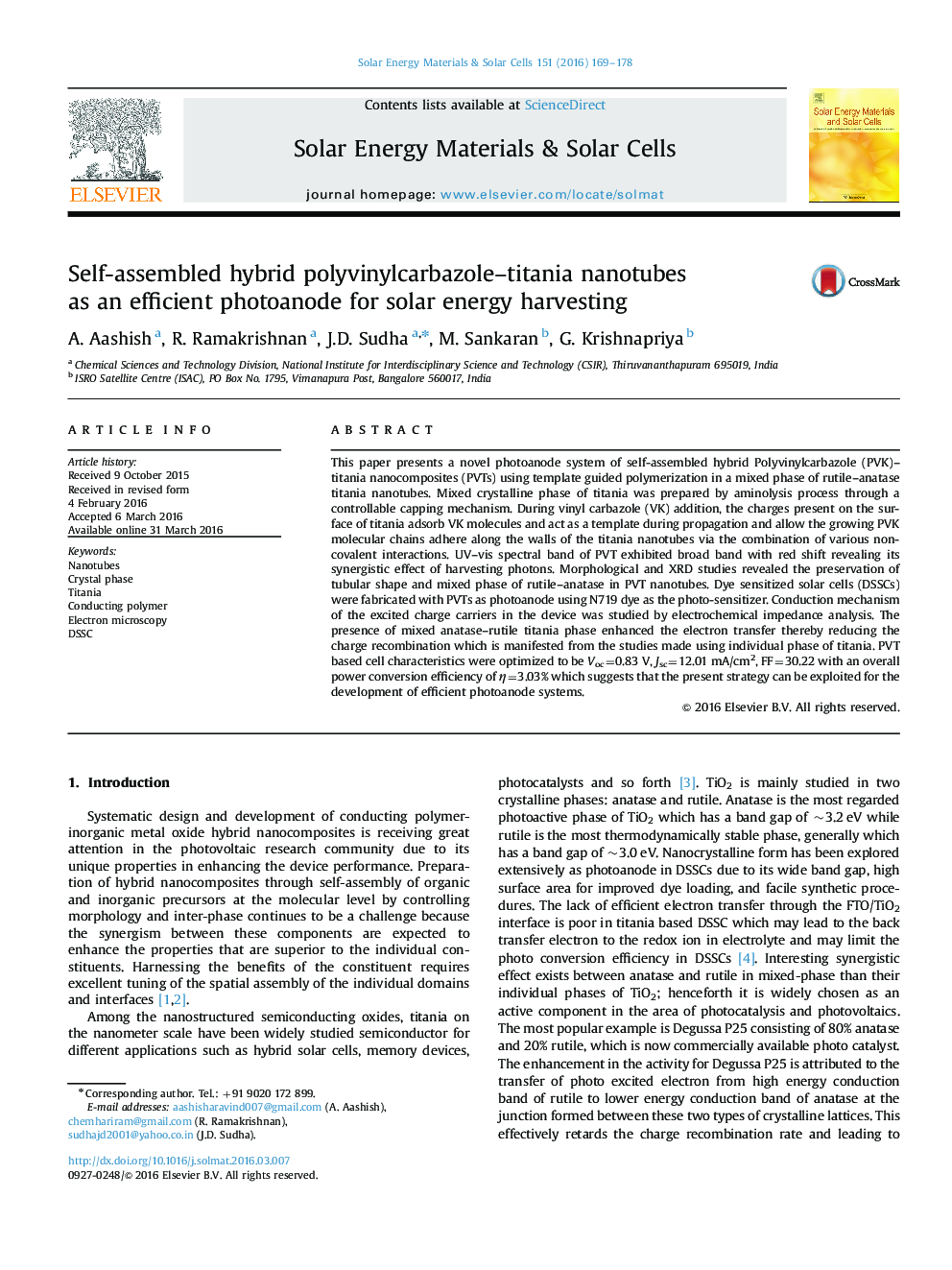| Article ID | Journal | Published Year | Pages | File Type |
|---|---|---|---|---|
| 77617 | Solar Energy Materials and Solar Cells | 2016 | 10 Pages |
•Nanotubes of biphasic titania prepared through aminolysis cum capping technique.•Semiconducting polyvinylcarbazole–titania hybrid nanotubes were prepared.•PVK–titania is an efficient photoanode system for DSSC.
This paper presents a novel photoanode system of self-assembled hybrid Polyvinylcarbazole (PVK)–titania nanocomposites (PVTs) using template guided polymerization in a mixed phase of rutile–anatase titania nanotubes. Mixed crystalline phase of titania was prepared by aminolysis process through a controllable capping mechanism. During vinyl carbazole (VK) addition, the charges present on the surface of titania adsorb VK molecules and act as a template during propagation and allow the growing PVK molecular chains adhere along the walls of the titania nanotubes via the combination of various non-covalent interactions. UV–vis spectral band of PVT exhibited broad band with red shift revealing its synergistic effect of harvesting photons. Morphological and XRD studies revealed the preservation of tubular shape and mixed phase of rutile–anatase in PVT nanotubes. Dye sensitized solar cells (DSSCs) were fabricated with PVTs as photoanode using N719 dye as the photo-sensitizer. Conduction mechanism of the excited charge carriers in the device was studied by electrochemical impedance analysis. The presence of mixed anatase–rutile titania phase enhanced the electron transfer thereby reducing the charge recombination which is manifested from the studies made using individual phase of titania. PVT based cell characteristics were optimized to be Voc=0.83 V, Jsc=12.01 mA/cm2, FF=30.22 with an overall power conversion efficiency of η=3.03% which suggests that the present strategy can be exploited for the development of efficient photoanode systems.
Graphical abstractFigure optionsDownload full-size imageDownload as PowerPoint slide
